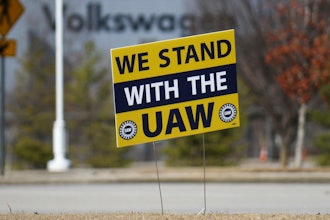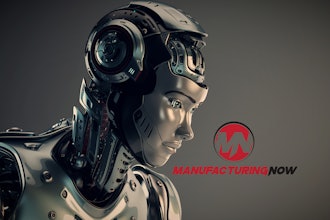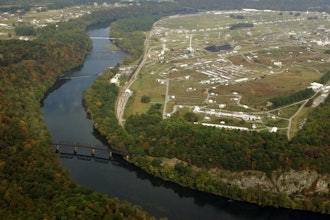Radar System Can See Through Flames
Researchers at the National Institute of Standards and Technology (NIST) wanted to find a better (and safer) way to measure objects through fire. They wanted to "see through the flames" so, naturally, they torched a person (correction: it was just a plastic toy skeleton).
The researchers used a laser detection and ranging (LADAR) system to capture the skeleton's complex three dimensional shape as a 3D point cloud. They tried conventional video, but it was barely visible.
These are optical range measurements that are already used in other fields, like manufacturing, but not they could be used to measure structures as they collapse in fires.
Using a commercial LADAR system, they team was able to map the distance to objects melting behind flames and soot within 30 micrometers.
The researchers also melted a piece of chocolate; they wanted objects that didn't melt too fast to be able to see how it they deformed over time.
The team plans to scale up the project - the first tests were conducted on lab burners, so not exactly fighting through the flames in a wildfire.
The work could one day find its way into emergency response drones and humanoid robots that could use the system to identify objects and victims in fires that have run out of control.
Ford is Tracking Every Employee Movement
When you think body tracking tech, you typically think about athletes using the technology to improve their game, or at least capture their likeness for a video game. Or, maybe you just think about how the Planet of the Apes reboot was a CGI masterpiece without an original concept among the bunch. Either way, the same technology has found a new application in the manufacturing industry.
Ford assembly plant workers in Spain are now wearing sensor suits. The system tracks their movements on the line, and is said to help promote good posture - and I'm sure nothing more.
The pilot system is being used by 70 employees in 21 work areas at Ford’s Valencia Engine Assembly Plant. Developed by the Bio-mechanics Institute in Valencia, Ford is using the data to design workstations that are less physically stressful and make employees more comfortable.
The suit is skin-tight and includes 15 movement-tracking sensors that are connected to a wireless detection unit. For the sake of this study, the sensors are most focused on the head, neck, shoulders, and limbs. The data creates a 3D skeletal animation of the worker.
So far, the study has been a hit, and Ford is considering rolling it out to other facilities.
Nikola Works to Make Weaponized UTVs Autonomous
Nikola, the company known for its electric semi-trucks and lawsuits with their shared namesake over the design of said semi-trucks, is in the news again, but this one doesn't have billion-dollar implications.
The powersports side of the business has signed a contract with SOFWERX, a non-profit collaboration between the United States Special Operations Command (USSOCOM) and the Doolittle Institute. The Tampa, FL-based non-profit, which is funded by Special Operation Command, is an incubator for new war tech.
Nikola is going to take it's 555 hp electric UTV that can go from 0-60 mph in 3.9 seconds, and Nikola is going to try and find a way to make it autonomous, or at least semi-autonomous.
The Reckless is modular, and capable of being outfitted with various types of high-power weapons systems and mobility options. For example, you can choose between tracks and tires.
Under the contract, the Reckless UTV will have to be designed to perform in four different situations: unmanned perimeter security with remote monitor, a supply run, control recovery and autonomous multi-vehicle missions.
The vehicle will have also support aerial and ground robots that will be able to interface with and deploy from the vehicle; and they need to have it done by May 2019.
This is Engineering By Design.






















